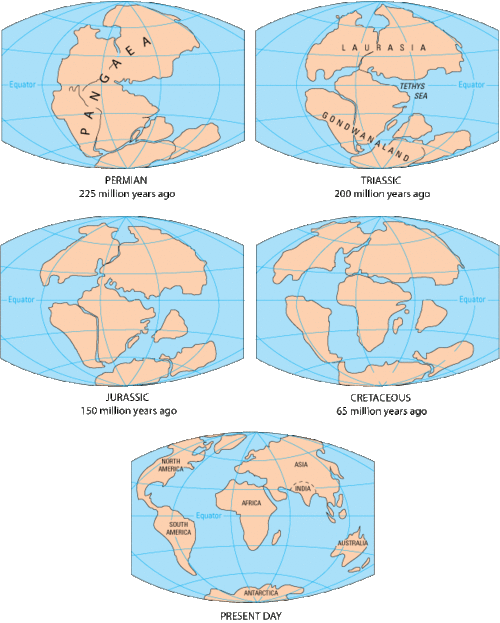Plate Tectonics Theory
Breakup of the supercontinent Pangaea, a prominent figure in the theory of continental drift, the forerunner to the theory of plate tectonics
Image Credit: pubs.usgs.gov/gip/dynamic/historical.html
In 1912, Alfred Wegener proposed that several continents had previously been one large continent, Pangaea which had broken apart. Fragments drifted to where they are now located (www.hartrao.ac.za/geodesy/tectonics.html). However, it was only during the 1960s, that the plate-tectonics theory was developed which allowed to explain the observations for large-scale motions of the Earth's lithospheric plates.
Plate tectonics maintains that new oceanic crust continuously spreads away from mid-oceanic ridges in a conveyor-belt-like motion. Many millions of years later, oceanic crust eventually descends at oceanic trenches in the mantle. As old oceanic crust is consumed at the trenches, new magma rises and erupts along the spreading ridges to form new crust. In effect, ocean basins are perpetually being "recycled," with the creation of new crust and the destruction of old oceanic lithosphere occurring simultaneously. This concept explains why Earth does not expand through sea-floor spreading, why there is so little sediment accumulation on the ocean floor, and why oceanic rocks are much younger than continental rocks.
For a more detailed explanation, go to the Mountain Building section.
Continental drift theory helps biogeographers to explain the disjunct biogeographic distribution of present-day life found on different continents but having similar ancestors. In particular, it explains the Gondwanan distribution of fossils.
